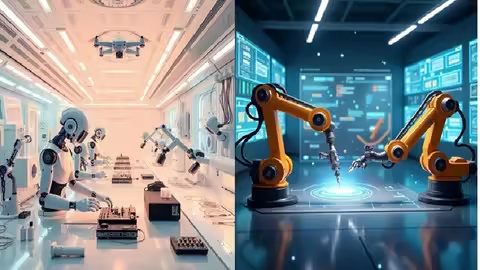
 |
Robotics: Dynamics, Control, And Motion Planning (part 2)
 Robotics: Dynamics, Control, And Motion Planning (part 2) Published 5/2025 MP4 | Video: h264, 1280x720 | Audio: AAC, 44.1 KHz Language: English | Size: 1.50 GB | Duration: 3h 25m Robot Dynamics, Motion Planning, Trajectory planning, advanced kinematics and velocity analysis What you'll learn Solve inverse kinematics problems and analyze robot workspace. Model and analyze robot velocity and singularities using differential kinematics. Apply dynamic formulations to compute forces and torques in manipulators. Plan trajectories and control robotic motion using advanced kinematics and screw theory. Requirements Basics of Robot Kinematics, Still you will learn everything that you want to know Description This course, Robotics: Dynamics, Control, and Motion Planning (Part 2), provides an in-depth exploration of advanced robotics concepts essential for designing and controlling robotic manipulators. It begins with a focus on inverse kinematics and workspace analysis, enabling students to compute joint parameters and understand the reachable space of various robot configurations such as two-link planar, SCARA, and articulated arms. The course then advances into differential kinematics, teaching students how to use Jacobian matrices for velocity analysis and understand singularities that affect manipulator performance.Building on this foundation, the dynamics module introduces the Euler-Lagrange and Newton-Euler formulations, equipping learners with tools to model the forces and torques acting on robotic systems. Students apply these methods through numerical problems, reinforcing practical understanding. The course also covers advanced motion concepts, including screw theory and the use of Plücker coordinates, enhancing the ability to represent complex robot motions efficiently.Finally, learners study motion planning and control, focusing on trajectory generation and implementing work cell controllers to ensure smooth and precise robot operation. This comprehensive course blends theoretical knowledge with practical problem-solving, preparing students and professionals for challenges in robotic system design, control, and automation. It is ideal for engineering students, researchers, and practitioners aiming to master advanced robotics techniques. Overview Section 1: Inverse Kinematics and Workspace Lecture 1 Inverse Kinematics Lecture 2 Workspace of a Two-Link Planar Manipulator Lecture 3 Solvability of Kinematic Equations Lecture 4 Inverse Kinematics of SCARA (RRPR) manipulator Lecture 5 Inverse Kinematics of Articulated (RRR) Robotic Arm Section 2: Differential Kinematics and Velocity Analysis Lecture 6 Differential Kinematics in Robotics Lecture 7 Two Numerical problems based on Differential Kinematics Lecture 8 Velocity Propagation Model for Serial Manipulator Lecture 9 Numerical Problem 1: Based on velocity propagation model for serial manipulator Lecture 10 Numerical Problem 2: Based on velocity propagation model for serial manipulator Lecture 11 Singularities in manipulators Section 3: Robot Dynamics Lecture 12 Euler-Lagrange Equation: Dynamics Lecture 13 Numerical problem based on Robot Dynamics Lecture 14 Newton-Euler formulation Lecture 15 Numerical problem based on forward recursion Lecture 16 Numerical problem based on backward recursion Lecture 17 Lagrangian Dynamic formulation for RP manipulator Section 4: Advanced Concepts in Motion Lecture 18 Screw Coordinates in Kinematics (Screw Theory) Lecture 19 Numerical problem based on Plücker Coordinates, Twist and Wrenches Section 5: Motion Planning & Control Lecture 20 Trajectory planning Lecture 21 Work Cell Controller in Robotics This course is ideal for undergraduate and graduate engineering students specializing in robotics, mechanical, or automation engineering who want to build a strong foundation in robotic kinematics, dynamics, and control. It is also well-suited for professionals and researchers aiming to deepen their knowledge of advanced robotic motion and manipulation techniques. Additionally, robotics enthusiasts and developers interested in both theoretical concepts and practical applications will find this course valuable. The course is particularly beneficial for those preparing for competitive exams such as GATE, IES, or technical interviews in the field of robotics and automation. S Цитата:
|
| Часовой пояс GMT +3, время: 03:36. |
vBulletin® Version 3.6.8.
Copyright ©2000 - 2025, Jelsoft Enterprises Ltd.
Перевод: zCarot